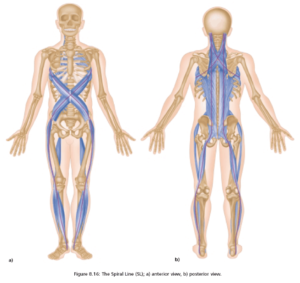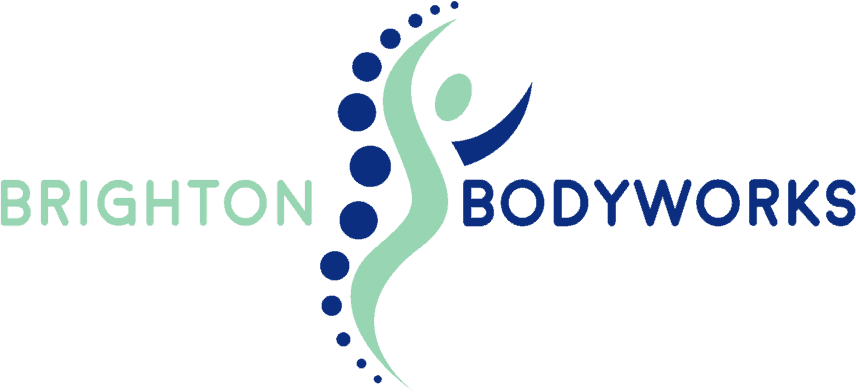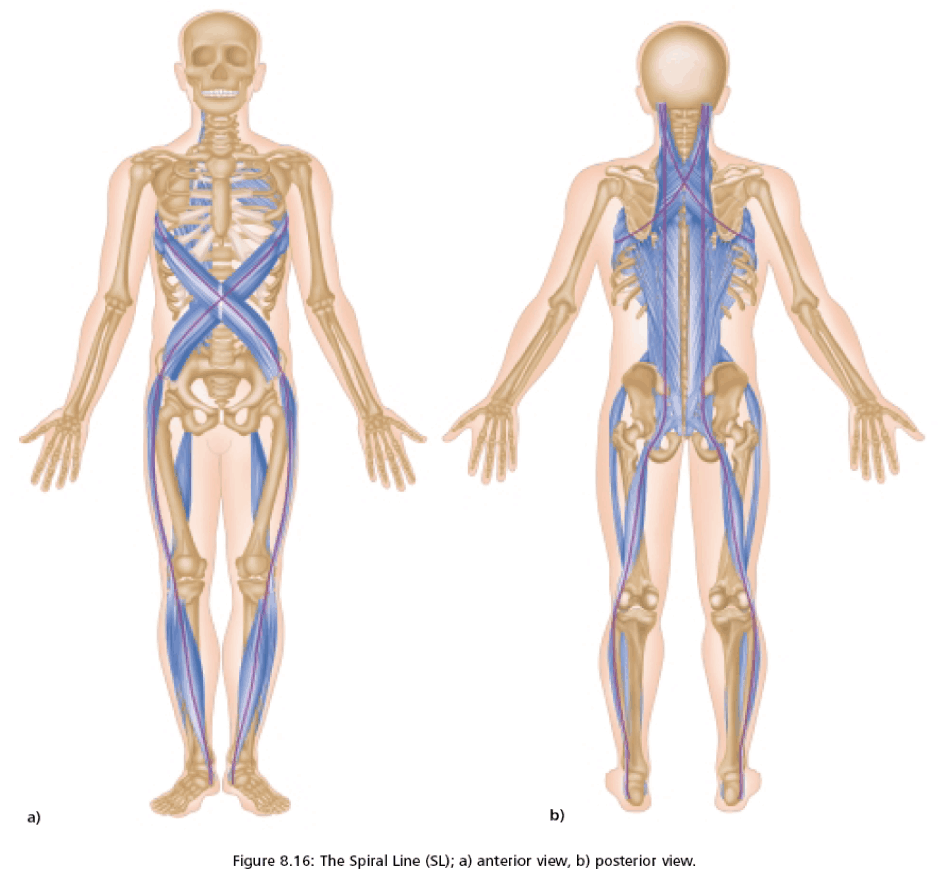
The five trains according to Myers are:
The Superficial Back Line
Plantar Fascia > Gastroc > Hamstrings > Sacrotuberous ligament > Thoracolumbarfascia > Erector Spinae > Nuchal Ligament > scalp fascia
The Superficial Front Line
Anterior compartment and periostium of the tibia > rectus femoris > rectus abdominus > Pectoralis/Sternalis fascia > SCM
The Lateral Line
Peroneal muscles > ITB > TFL/Glute max > External/Internal Oblique & deep QL > Internal/External intercostals > Splenius cervicis/iliocostalis cervis/SCM/Scalenes
The Spiral Line
Splenius Capitis > Rhomboids (opposite side to splenius capitis) > serratus anterior > External/internal oblique > TFL (opposite side of obliques) > ITB > Anterior tibialis > Peroneus longus > biceps femoris >sacrotuberous ligament > sacral fascia > erector spinae
The Deep Front Line
Posterior tibialis > interosseuos membrane > Knee capsule > adductor hiatus > intermuscular septum > femoral triangle > psoas > anterior longitudinal ligament > diaphragm > pericardium > mediastium > parietal pleura > fascia prevertebralis > scalenes
Back of the Arm Lines
1st tract
Trapezius > Deltoid > lateral intermuscular septum > common extensor tendon
2nd tract
Rhomboids > Infraspinatus > Triceps > Periostium of ulna to the small finger
3rd tract (stabilization)
Latissimus Dorsi > Thoracolumbar fascia > sacral fascia (opposite side of thoracolumbar fascia) > glute max (opposite side of thoracolumbar fascia) > vastus lateralis
Front of the Arm Lines
1st tract
latissimus dorsi/teres major/pectoralis major > medial intermuscular septum > medial epicondyle > common flexor tendon > palmar side of hand and fingers
2nd tract
Pec minor > biceps (short head)/coracobrachialis > radius > flexor compartment > thumb
3rd tract (stabilization)
Pec major > external oblique > adductor longus (opposite side of external oblique) > gracilis > pes anserine > tibial periostium
This video describes the Spiral Line. Think about how you walk; left leg goes forward as the right arm moves forward, and then the same on the opposite side. How does a cricketer bowl? He raises his right arm to throw as he digs in with his left leg. Do you have a hip and opposite shoulder problem? Spiral line connections might be an important piece of the puzzle. If you are looking for a therapy plan which treats not only the site of pain but looks at whole body movement and optimising strength and power throughout the body, then get in touch!
A Tour of the Spiral Line from AnatomyTrains on Vimeo.

